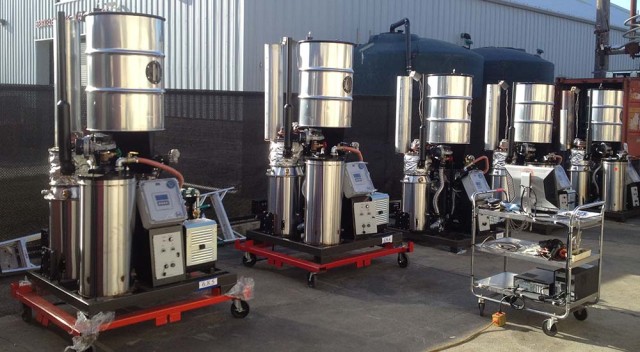Howdy 👋
There’s an exclusive video interview dropping in a few days and a big announcement happening on our Twitter and LinkedIn.
A company announcing a pretty fascinating product…it’s always fun hearing things first…
This week’s newsletter is all about energy and electricity – enjoy.
– Swarnav S Pujari
In Your Inbox: Ho we can electrify America; How will oil companies transition to clean energy; How biomass can be used for power generation

Corporations and municipalities are working to meet greenhouse gas emissions reductions commitments. Additionally, many states in the US have announced climate action plans with a greenhouse gas reduction target. YellowTin is here to help by providing a clean electrification platform to engage residential consumers to advance their decarbonization goals.
During the next 4-8 years we will see the Biden Administration transform our energy infrastructure to create jobs, build resilience and invest in innovation.
The modern consumer will be encouraged to purchase increasingly cost effective, climate friendly technologies through outreach, incentives and programs by utilities, vendors, corporations and municipalities. All these factors will define this decade for investment and progress in a clean energy future.
By working with power providers, cities, and solar panel installers, YellowTin’s software has accelerated the adoption of clean technologies, such as residential solar, storage, electric vehicles and heat pumps, allowing customers to electrify, save money, green their power supply and reduce their own greenhouse gas emissions.
Sign up for The Impact and learn the perspectives behind the latest sustainability trends

You, surely, are interested in energy solutions that succeed as fossil fuels wind down. I know I am, along with the others at The Impact. But what of oil execs? Don’t you want to know what they’re now saying about the end of oil?
Are they clinging to the past-its-prime idea of fossil fuels as imperative for economic growth? Are they engaged in more greenwashing? Or are they starting to embrace economic growth in post-fossil solutions?
Short answer: at least some oil execs are talking about life after oil. Can we believe them?
So, in early May, I joined a live panel discussion on energy security from a leading Washington think tank, CSIS. The idea of the session was to have energy (= fossil fuel) executives and analysts talk about the next few years, particularly to focus on the question of whether big firms are spending enough money, new capital investment, to keep the USA going?
Many questions focused on whether spending on oil and gas production would be high enough (a shockingly outdated question, surely)?
The fossil fuel executives’ answers mostly spoke to keeping their businesses vibrant in the context of an energy transition away from oil and gas. They described capital spending peaks on oil and gas production. They didn’t push back on the need to transition beyond fossil fuels.
Let’s immediately note: beware greenwashing.
Is this just more of the same? Remember when BP (formerly British Petroleum) put out ads with beautiful green landscapes and clear skies and the nifty slogan “Beyond Petroleum”? It was nice, and all, but BP kept on investing in Canadian tar sands, drilling new wells, and stayed involved in coal mining. It presided over the Deepwater Horizon oil disaster in the Gulf. BP is not the only oil and gas firm to use attractive PR genuflections in front of the need for a cleaner, greener world to deflect attention from an unchanged mission to drill, baby, drill, never mind the consequences – Greenwashing.
The assertion that capital spending on oil and gas production has already peaked and won’t ever go back is not as intriguing as it seems: the boom in shale oil production, fracking and so on, a few years ago, rode on the back of a one-time, quick burst in capital spending that has faded.
Nonetheless, “Peak Oil” – the idea that oil will reach a high point and then fade, is here in detail. First, there’s a peak in spending on production assets – and that seems to be already history. Then there’s a peak in demand. And then, finally, a peak followed by a long-term decline in production. The peak in ‘upstream’ spending – capital investment in wells and oil reserves – is, they say, behind us already.
European firms, pushed by governments, seem to be leading in moving into the transition. The CSIS bash featured Gretchen Watkins, head of Shell US and with roles including global leadership in unconventional fuels and renewables. Shell includes liquified natural gas on that list; a fossil fuel with a somewhat lower carbon footprint than oil, but still. Asked specifically about Shell’s capex and cash flow, she ignored the question and spoke about the goal that Shell has announced – to have an entirely carbon-neutral business by 2050. Not only its own operations, but that its business in carbon sequestration and renewables will make its entire energy business carbon-neutral. She said her own compensation is – in part – tied to helping Shell get toward carbon neutral.
Scott Sheffield, CEO of a shale-oil giant, Pioneer Resources, speaking in classic Texan oilman drawl, delivered similar messages: shale oil spending is past its peak; it’s time to return cash to investors and not plow more into capital; oil companies have to work hard to slash methane emissions; Saudi Aramco’s dividends are, in large part, intended to drive the country’s transition from fossil fuels.
Here’s a meeting of oil leaders, and they’re talking the talk: the end of oil is on its way. But these are hard-nosed executives, focused on cash from their businesses. Oil and gas companies have a long, long history of lying about climate change (and other environmental and societal damages). Trust, oft broken, returns slowly. Will they walk the walk, this time?
This is where I get very uncomfortable. The arc of the meeting was: CSIS asks oil and gas exec about investment in oil; exec responds about transition to a post-fossil fuel era; CSIS asks no questions about that. There’s no attempt to create a narrative of accountability: how will the USA’s or the world’s energy needs be met in transition? Who is holding anyone’s feet to the fire to make sure both that the transition occurs in a timely manner and that energy supplies are there?
That’s a key omission. CSIS, and the community at large, including us, must do better. Oil companies can – and, as public companies and as vital ingredients of the economy surely must – declare how they intend to transition. Share the models, the assumptions. How much do they think solar power will cost in 10 years? What prices for carbon sequestration are they assuming? How well will these support meeting climate goals?
Why did not the analysts from CSIS (and Boston Consulting Group) push on these? Until we see the spreadsheets, the raw data, and the commitments – to investors and to the world at large – it’s easy to assume that we’re just seeing greenwashing. And until CSIS and BCG get to sharp questions, their credibility and those of fossil fuel firms saying they’ve seen the light, all remain in doubt.
The host of this meeting was CSIS – the Center for Strategic and International Studies, a large, Washington, D.C., think tank, focused on many issues of strategic importance for the vitality and success of the USA. Yes, it’s got a heavy dose of corporate and big-military thinking and, yes, its affiliates include Henry Kissinger. Expensive suits and silk ties. And ties, of a different sort, to the US Department of Defense and intelligence community. What better place, then, to listen to voices from another side?
You can see the CSIS discussion HERE and read about Shell’s Net Zero assertions HERE

Last summer, wildfires in California burned down over four million acres of the golden state. The destruction also led to a newly termed problem for a lot of communities—Public Safety Power Shutoffs for communities in California that were forced to go days without electrical power because of the dangers posed by power lines in the parched, drought-ridden portions of the state.
All Power Labs (APL) can help California manage the forest fuels that led to these wildfires and can provide clean energy remotely. And, APL’s biochar as output from their biomass conversion process can help sequester carbon in the soil that in turn grows food.
APL is currently executing on funding contracts with the California Energy Commission (CEC) and CAL FIRE. If they can successfully process woody biomass chips through their clean gasification process, California may have a solution that can turn the immense amounts of forest fire fuel from dry trees into grid-tied or off-grid electricity.
Investors sometimes reasonably question hard-tech ventures, such as APL, that utilize grant funding to run pilot tests as this strategy does not always nail product-market fit and therefore reduce the chances of becoming viable businesses. From my vantage point, I have seen this shift over the last few years as grant-funding agencies are becoming more adept at designing programs to better lead to product-market fit and to private investment rounds.
Recently, investors have increasingly placed bets on cleantech, hard-tech, and ag-tech ventures as so many of our communities have serious problems to contend with and many stakeholders are willing to support potential solutions with their hearts, minds, and wallets. APL recently closed a series A investment round, perhaps indicating additional public- to private-investment momentum for cleantech ventures.
APL is also embarking on a similar biomass conversion project in the Yosemite National Forest in the Sierra Nevada mountains of Central California. With successful pilot projects and increased visibility, APL may help California mitigate our state’s wildfire season and minimize Public Safety Power Shutoffs (PSPSs) for those communities in the path of potential wildfires this summer and next.
Editors: Swarnav S Pujari, Daniel Kriozere Writers: John Conor Ryan, Jeff Macon
If you aren’t absolutely thrilled with The Impact, reply and let us know why. Or you can unsubscribe from all updates by clicking here.
Copyright © The Impact 2021. All Rights Reserved || 19 Morris Ave, Bldg 128, Brooklyn NY 11205
Develop your market map of up-and-coming climate startups and market opportunities by subscribing to our weekly newsletter for free.